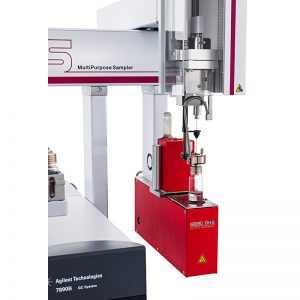Static (equilibrium) headspace sampling is commonly used for GC determination of volatiles in solid and liquid samples. Since this technique relies on the analyte partitioning between the sample and headspace and uses a fixed injection volume it may not provide adequate detection limits, particularly for higher molecular weight, higher boiling analytes, and for polar analytes in aqueous samples.
In this study we describe the use of an automated dynamic headspace sampler for determination of volatiles in high water content solids and aqueous samples. This sampler uses a two-needle design to flush the headspace of standard headspace vials onto replaceable adsorbent traps that can be thermostatted to control interference from water vapor. After sample collection, the adsorbent traps can be automatically dry purged to further eliminate trace water before introduction
into the integrated thermal desorber. This design enables automated optimization of trapping conditions including choice of adsorbent, and has the potential for automated internal standard addition and automated calibration.
Performance of the new system was compared to traditional static headspace analysis using high water content solid samples like fruits and vegetables, and also beverages. To illustrate the versatility of the new design, several sample types with high water content were tested with a series of adsorbent traps to determine optimal trapping conditions. Better detection limits were obtained with dynamic headspace for all sample types.



